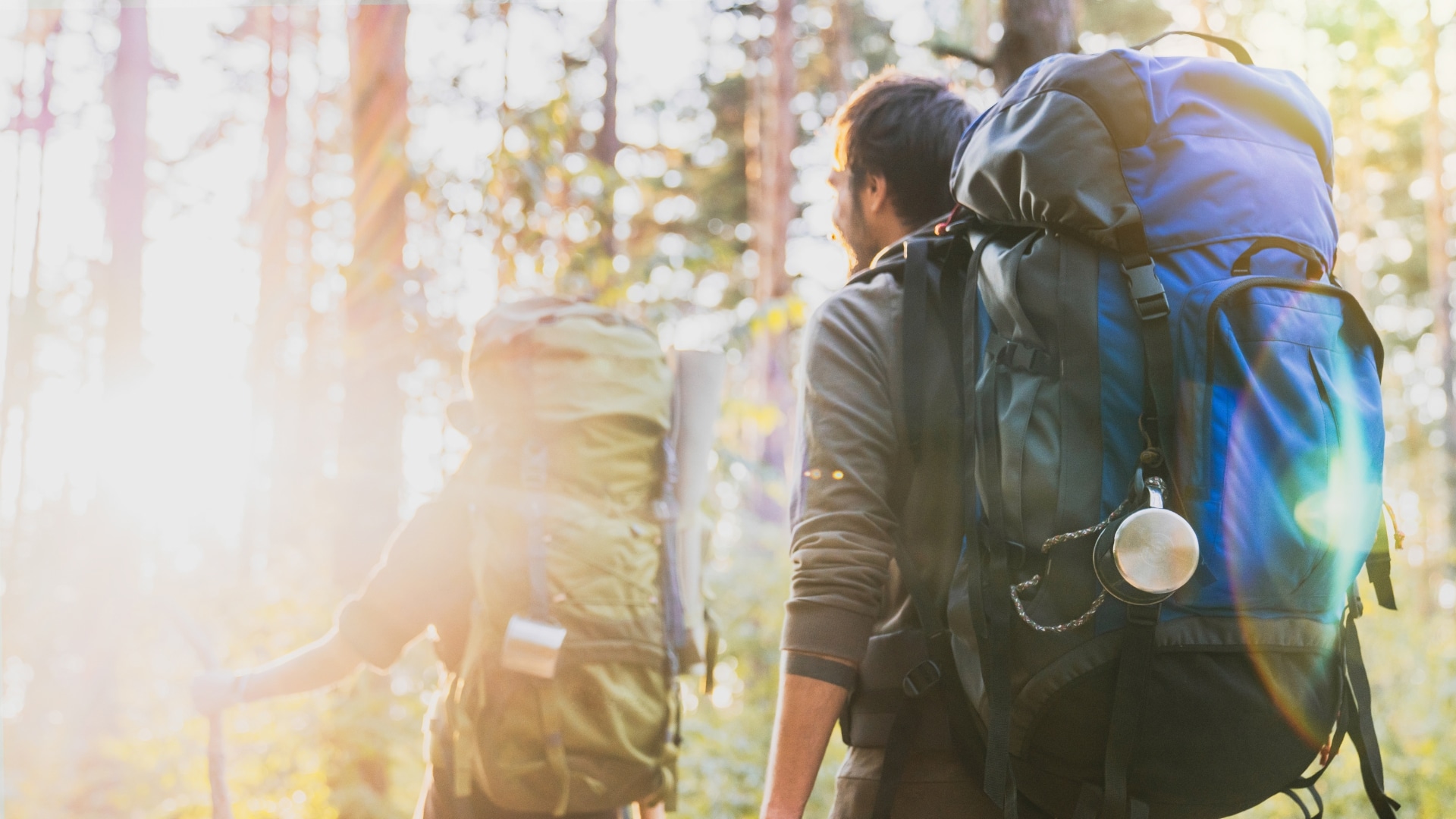
Backpacking is more than just a trek through the wilderness; it's an adventure that combines outdoor exploration with self-sufficiency. By carrying essential gear and navigating remote areas, backpackers experience a deep connection with nature.
This form of travel requires meticulous planning and adherence to safety measures but offers profound benefits for those seeking a cost-effective and enriching adventure.
In this article, we’ll delve into the fundamentals of backpacking, explore its distinctions from hiking, and share practical tips for beginners. Discover the essentials and unique experiences that backpacking provides.
Backpacking is a method of travel that emphasizes outdoor adventures and self-sufficiency, providing a cost-effective way to explore new environments. This form of travel prioritizes outdoor exploration, enabling travelers to witness natural landscapes often inaccessible by conventional means.
By carrying all essential gear in a backpack, travelers can navigate remote areas and create enduring, enriching experiences. This unique blend of adventure and self-reliance broadens one's horizons and fosters a deeper appreciation for the world's varied ecosystems. Backpacking offers physically and mentally rewarding experiences that connect individuals with nature in profound ways.
To fully appreciate the multifaceted nature of backpacking, it is important to understand the key aspects that define this adventurous form of travel.
One of the primary considerations is the necessity to carry all essential gear in a backpack, including a tent, sleeping bag, food supplies, and cooking equipment. Safety precautions are paramount; travelers must be prepared for various conditions by packing first aid kits, maps, and navigation tools.
Backpacking typically involves multi-day trips with overnight stays, often in remote locations. Pre-planning the route and camping spots is crucial for a smooth experience. This preparation ensures that backpackers can explore off-the-beaten-path areas safely, enjoying the full depth of their outdoor adventure.
Distinguishing between backpacking and hiking necessitates a clear understanding of the primary differences in duration, gear requirements, and overall objectives.
Hiking generally involves shorter, day-long excursions that require minimal equipment, such as a water bottle and a small daypack. In contrast, backpacking is an extended outdoor activity that includes overnight camping, necessitating more comprehensive backpacking gear, such as a tent, sleeping bag, and cooking supplies.
While both activities foster trail exploration and a connection with nature, backpacking allows for deeper immersion into remote areas over multiple days. The key distinction lies in the commitment to longer journeys and self-sufficiency, which defines the essence of backpacking compared to the more transient nature of hiking.
Backpacking offers unique opportunities for self-sufficiency, fitness, and exploration. Venturing off the beaten path allows backpackers to navigate remote areas and experience the wilderness firsthand, enhancing their self-reliance and survival skills.
The physical demands of backpacking, such as hiking rugged terrains and carrying supplies, significantly boost physical fitness. These challenges are complemented by the mental well-being gained from disconnecting from daily stressors and embracing the tranquility of nature.
The combination of self-sufficiency, physical fitness, and exploration makes backpacking a holistic and enriching endeavor, promoting personal growth and overall well-being.
For beginner backpackers, starting with a simple day trip close to home can provide a solid foundation for future adventures. This allows you to get familiar with your gear, understand your physical limits, and gain confidence in your abilities without the added pressure of a long journey.
Choose a reliable backpack that fits well and has adequate capacity for your gear. Look for adjustable straps and a supportive frame to ensure comfort during long hikes.
Invest in comfortable, durable footwear that suits the terrain you'll be exploring. Break in your shoes before the trip to prevent blisters and discomfort.
Wear weather-appropriate clothing in layers to adapt to changing conditions. Moisture-wicking fabrics and quick-drying materials are ideal for staying comfortable.
Carry a map, compass, or GPS device to navigate your route. Familiarize yourself with these tools before your trip to avoid getting lost.
Ensuring that your gear is lightweight yet functional can significantly enhance your backpacking experience. Choose multipurpose items to reduce weight, and pack only the essentials to avoid unnecessary strain.
Select a lightweight tent and sleeping bag suitable for the expected weather conditions. Ensure they are compact and easy to carry.
Opt for a compact stove and lightweight cookware. Plan simple meals that require minimal preparation and cooking time.
Understanding and implementing safety precautions is vital for a successful backpacking trip.
Thoroughly research your destination, including trail conditions, weather forecasts, and potential hazards. Plan your route and camping spots in advance to avoid unforeseen challenges.
Inform someone about your trip details, including your route and expected return time. This enhances safety in case of emergencies.
Carry a basic first-aid kit and emergency supplies, such as a whistle, flashlight, and extra batteries. These items can be lifesaving in unexpected situations.
Backpacking requires physical endurance. Prepare your body by engaging in regular exercise, focusing on cardiovascular fitness and strength training. Practice hiking with a loaded backpack to build stamina and get accustomed to the weight.
Practice Leave No Trace principles to minimize your environmental impact. This includes packing out all trash, minimizing campfire impact, respecting wildlife, and staying on designated trails.
Before embarking on your trip, double-check that you have all necessary gear, sufficient food and water, and a clear understanding of your route and safety plan. A well-prepared backpacker is a confident and safe traveler.
By following these tips, beginner backpackers can enjoy a safe, rewarding, and enriching experience, laying the groundwork for more challenging adventures in the future.
Backpacking serves as a profound method of travel that fosters a symbiotic relationship between outdoor exploration and cultural immersion. By emphasizing essential gear, careful route planning, and safety precautions, this form of travel offers a cost-effective and enriching experience.
Distinguishing itself from hiking, backpacking provides deeper engagement with natural landscapes and local communities. Ultimately, the practice of backpacking emerges as an invaluable approach for those seeking both adventure and cultural understanding.
When solo backpacking, ensure you share your itinerary with emergency contacts and frequently check weather alerts. Carry a well-stocked first aid kit, a reliable map, and a communication device for added safety and preparedness.
To minimize environmental impact while backpacking, follow Leave No Trace principles such as minimizing campfire impact and disposing of waste properly. Use eco-friendly gear to reduce your carbon footprint and ensure sustainable outdoor practices.
For lightweight backpacking, the best food options include freeze-dried meals and trail snacks. Freeze-dried meals are compact and easy to prepare, while trail snacks such as nuts, dried fruits, and energy bars provide quick, nutritious energy.
Selecting the right backpack involves ensuring a proper fit to your torso length and hips for optimal comfort. Additionally, consider weight distribution features, such as adjustable straps and compartments, to maintain balance and reduce strain.
When backpacking, avoid the common mistakes of overpacking gear, which can lead to unnecessary strain, and ignoring permits, which can result in legal issues and fines. Proper planning and adherence to regulations are essential for a successful trip.
